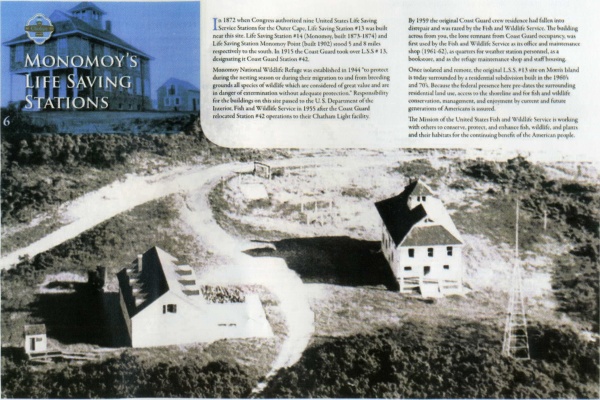
Info
Details
Monomoy National Wildlife Refuge
, MA
Plaque Content:
In 1872 when Congress authorized nine United States Life Saving Service Stations for the Outer Cape, Life Saving Station #13 was built near this site.
Life Saving Station #14 (Monomoy, built 1873-1874) and Life Saving Station Monomoy Point (built 1902) stood 5 and 8 miles respectively to the south.
In 1915 the Coast Guard took over L.S.S. #13, designating it Coast Guard Station #42.
Monomoy Wildlife Refuge was established in 1944 "to protect during the nesting season or during their migration to and from breeding grounds all species of wildlife which are considered of great value and are in danger of extermination without adequate protection." Responsibility for the buildings on this site passed to the U.S. Department of the Interior, Fish and Wildlife Service in 1955 after the Coast Guard relocated Station #42 operations to their Chatham Light facility.
By 1959 the original Coast Guard crew residence had fallen into disrepair and was razed by the Fish and Wildlife Service. The building across from you, the lone remnant from Coast Guard occupancy, was first used by the Fish and Wildlife Service as its office and maintenance shop (1961-62), as quarters for weather station personnel, as a bookstore, and as the refuge maintenance shop and staff housing.
Once isolated and remote, the original L.S.S. #13 site on Morris Island is today surrounded by a residential subdivision built in the 1960's and 70's. Because the federal presence here pre-dates the surrounding residential land use, access to the shoreline and for fish and wildlife conservation, management, and enjoyment by current and future generations of Americans is assured.
The Mission of the United States Fish and Wildlife Service is working with others to conserve, protect, and enhance fish, wildlife, and plants and their habitats for the continuing benefit of the American people.

